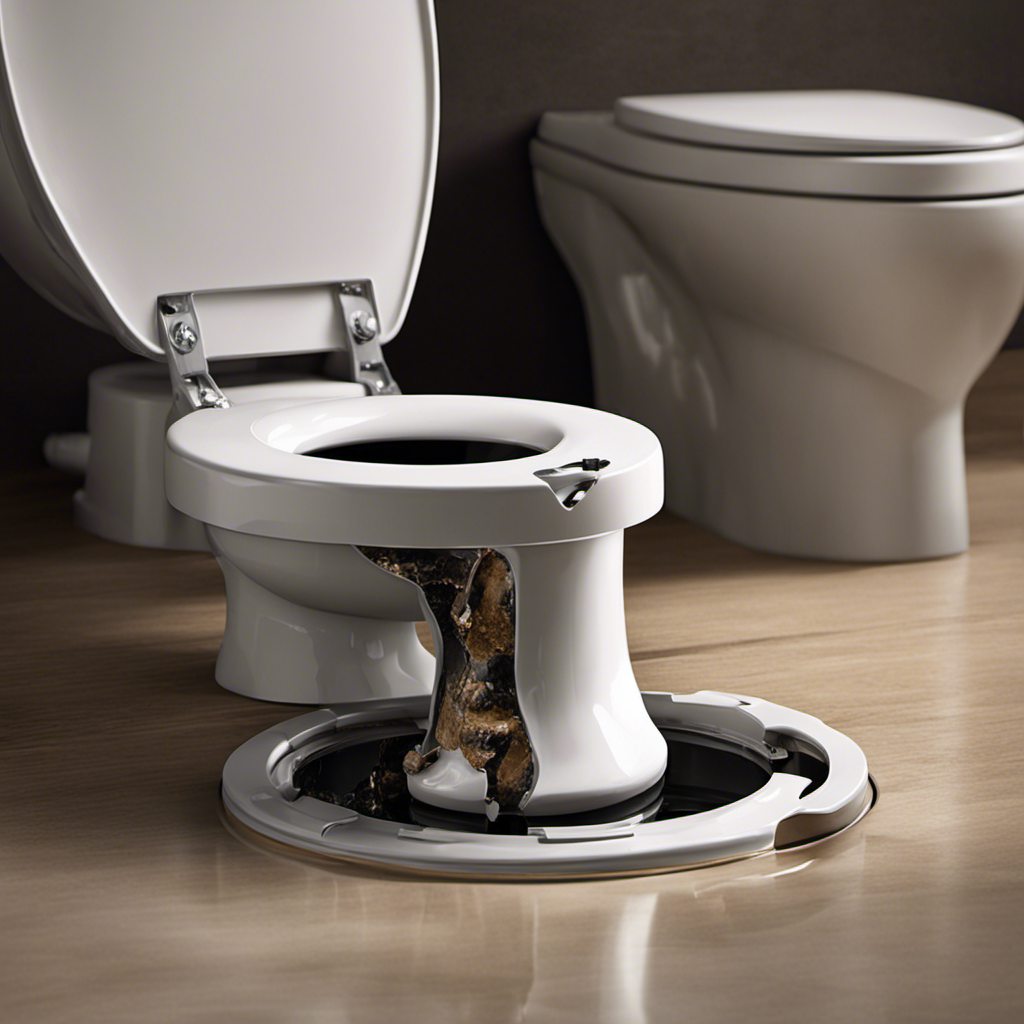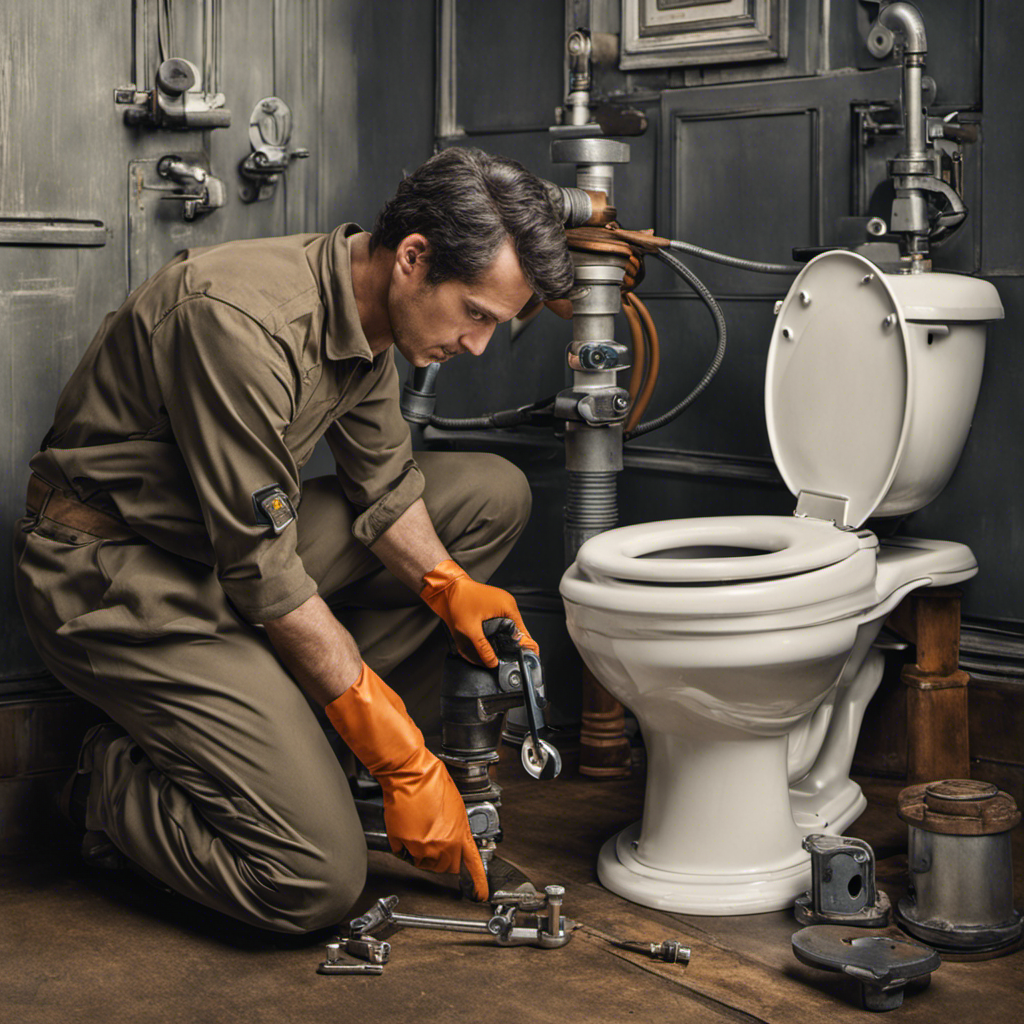I’ve been in that frustrating situation before – standing in front of a toilet that won’t fill. But don’t worry, I’ve got you covered.
In this article, I’ll walk you through step-by-step instructions on how to fix a toilet that refuses to fill up.
We’ll start by checking the water supply, inspecting the fill valve, adjusting the float, clearing blockages in the fill tube, and if necessary, replacing the fill valve assembly.
Let’s get your toilet back in working order!
Key Takeaways
- Ensure that the water supply valve is fully open.
- Inspect and clean the fill valve to remove sediment and debris.
- Adjust the float to the recommended height.
- Clear any blockages in the fill tube to allow proper water flow.
Checking the Water Supply
To fix your toilet that won’t fill, the first step is to check if you’ve turned on the water supply valve. Start by locating the valve, usually near the base of the toilet, and ensure that it is fully open, allowing water to flow freely into the tank.
If the valve is already open, the next step is to troubleshoot the water pressure. Check other faucets in your home to see if they are experiencing low water pressure as well.
If the problem is isolated to the toilet, the issue might lie with the water shut off valve. To test this, turn off the water supply valve and remove the supply line from the toilet tank. Place the end of the supply line into a bucket and turn the valve back on. If water flows freely into the bucket, the shut off valve is functioning properly. If not, it may need to be replaced.
Inspecting the Fill Valve
Inspect the fill valve by checking for any leaks or signs of damage. The fill valve is responsible for refilling the toilet tank with water after each flush. If it is not functioning properly, it can lead to a toilet that won’t fill. To determine if the fill valve is the issue, start by visually inspecting it for any leaks or cracks. If there are any visible signs of damage, it will need to be replaced. Additionally, cleaning the fill valve can also help improve its performance. Sediment and debris can accumulate over time, causing the valve to malfunction. To clean the fill valve, turn off the water supply, remove the valve cap, and flush out any debris. This simple maintenance task can often solve the problem of a toilet that won’t fill.
| PROBLEM | SOLUTION |
|---|---|
| Leaks | Replace the fill valve |
| Damage | Replace the fill valve |
| Debris | Clean the fill valve |
Adjusting the Float
Adjusting the float can help regulate the water level in the toilet tank. Here are some steps to adjust the float height:
- Locate the float inside the toilet tank.
- Identify the adjustment screw or clip attached to the float.
- Turn the screw counterclockwise to raise the float or clockwise to lower it.
- Adjust the float to the recommended height, usually indicated by a line on the overflow tube.
- Flush the toilet and observe if the water level is now at the desired level.
By making these float adjustments, you can ensure that the tank fills to the appropriate level, preventing any issues with water overflow or insufficient flushing power.
Now, let’s move on to clearing blockages in the fill tube to address any further problems with your toilet’s water supply.
Clearing Blockages in the Fill Tube
If your toilet tank is not filling properly, you may need to clear any blockages in the fill tube. The fill tube is a small plastic tube that connects the fill valve to the overflow tube. Blockages in the fill tube can prevent water from flowing into the tank and cause your toilet to not fill properly.
To clear the blockage, follow these steps:
- Shut off the water supply to the toilet.
- Disconnect the fill tube from the fill valve.
- Use a small brush or pipe cleaner to clean out any debris or mineral deposits from the fill tube.
- Reconnect the fill tube to the fill valve.
Replacing the Fill Valve Assembly
To replace the fill valve assembly, you’ll need to start by shutting off the water supply to the toilet. Here’s a step-by-step guide on how to install new parts and troubleshoot common issues:
- Turn off the water supply valve located near the base of the toilet.
- Flush the toilet to drain the water from the tank.
- Disconnect the water supply line from the bottom of the fill valve.
- Unscrew the locknut located under the tank to remove the old fill valve assembly.
- Install the new fill valve assembly by following the manufacturer’s instructions, making sure it is securely tightened.
If you’re troubleshooting common issues such as a toilet that won’t fill, make sure to check for any blockages in the fill tube or the float mechanism. Additionally, ensure that the water supply valve is open and functioning properly.
Frequently Asked Questions
How Do I Know if the Toilet Won’t Fill Due to a Problem With the Water Supply?
If my toilet won’t fill, I can diagnose a problem with the water supply by checking the shut-off valve, supply line, and water pressure. Troubleshooting the toilet filling issue requires a systematic approach.
What Are the Common Signs of a Faulty Fill Valve?
When troubleshooting common toilet fill issues, it’s important to know the signs of a faulty fill valve. Some common signs include a constantly running toilet, low water pressure, and a toilet that won’t fill at all.
Can the Float Height Be Adjusted on All Types of Toilet Models?
Adjusting the float height is a crucial step in troubleshooting toilet fill issues. It ensures proper water level and prevents a catastrophe of epic proportions. Thankfully, most toilet models allow for easy adjustment.
Are There Any Specific Tools Required to Clear Blockages in the Fill Tube?
To clear blockages in the fill tube and troubleshoot the water supply, you may need specific tools like a plunger or a snake. These tools can help remove any obstructions and restore proper water flow to the toilet.
How Often Should the Fill Valve Assembly Be Replaced?
I replace the fill valve assembly every 5-7 years to ensure proper functioning of my toilet. Regular maintenance and troubleshooting can help identify any issues with a toilet that won’t fill properly.
Conclusion
Well, congratulations! You’ve successfully mastered the art of fixing a toilet that won’t fill. I’m sure you feel like a true plumbing expert now.
Who needs to call a professional when you can handle any toilet-related issue with ease? So, next time you encounter a stubborn toilet, just remember these steps and show that toilet who’s boss.
Keep up the great work, DIY plumber!










